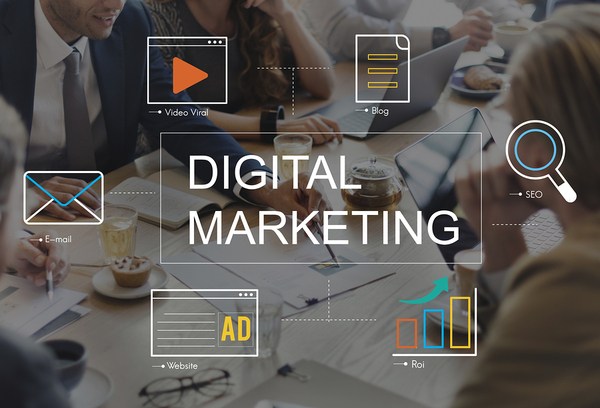
Tom Haak is the director of the HR Trend Institute. We recently asked him for his insight on how HR has evolved over the past three decades and what types of training are essential for those in the profession today. Here’s what Tom shared:
Can you talk about your background and interest in HR?
After I studied Experimental Psychology, I started my career in HR in 1982, with Philips Electronics. I have worked 30-plus years in HR, many years in HR executive positions in multinationals. The focus of my interests have always been in organizational development, talent management and top teams in organizations. With small teams I have always been able to have a visible impact in the organizations where I worked. Generally, I think the impact of HR could be lot higher!
Can you tell us about the mission behind the HR Trend Institute?
Our belief is that life in organizations can me a lot more fun, and that the impact of HR on organizations can be a lot higher, if the opportunities offered by current trends are used better. Our mission is to inspire HR professionals and others responsible for HR. We study current trends, and use our findings for inspiration, through writing, speaking and conduction workshops. We also like to work with students, as they are the future of HR.
How has HR evolved since you started your career?
Unfortunately, HR is evolving slowly. The long-term trend is from HR as a more administrative function to a business-focused profession. Dave Ulrich has done a lot of good work for the development of the profession, but there is also a downside. In the last years everybody wants the become an “HR Business Partner,” focusing on HR strategy and change management. Many HR professionals do not have the skills to do this well. Ninety percent of the HR work is HR operations, and there has not been enough focus on HR operations in the last years. To be successful in HR operations you need IT skills and skills comparable to what is needed in the hospitality business. By focusing too much on management, HR has also drifted away from the people in the organization. The last years you can hear a plea for HR to become more “human” again.
What is having the biggest impact on the profession today?
The opportunities created by technology have the biggest impact on the profession. Everything is digital today. The impact is twofold. Organizations are transforming and HR has to play an important role in these transformations. Secondly, by using HR Tech, HR can change its impact a lot. Many jobs will be automated in the coming years and that will create major issues. On the positive side, technology allows people to make better decisions. Man and machine is a very powerful combination. Recruitment and selection is an area where you see many promising developments.
What types of education/training should those pursuing HR today be sure to attain to be more marketable?
A solid foundation of methodology and statistics is important. People analytics is getting more important, and the HR professionals should be able the set up experiments and work with data in a clever way.
Consulting skills are very important. Can you ask the right questions? Can you listen? Do you have a real interest and understanding of the business? Having experience with modern working methods, such as design thinking, agile and lean. Agility is necessary, in order to be able to adapt and take advantage of fast changing situations. A broad business knowledge is an advantage, as HR more and more has to work in multidisciplinary teams.
What are the most useful resources for HR students and professionals to be following today?
There are many useful online resources. Deloitte with Bersin publish a lot of valuable information. Harvard Business Review is excellent. Our site is worthwhile to follow, and we also publish a Flipboard magazine: The Future of HR. Personally I get a lot of good information via various channels: Twitter (there are various HR focused lists), LinkedIn, Flipboard and also Pinterest.
What are the most important or exciting trends you’re following in HR today? Why do they interest you?
Recently, we published our annual overview with HR trends: 10 HR Trends for 2017. I already mentioned man-machine collaboration and the opportunities created by artificial intelligence. I like to mention three others here. As first one “consumerization,” a trend that is closely related to “the employee experience.” People are more and more expecting an experience at work that is comparable to the experience they have at home. As second one: “Performance Consulting.” Many organizations are redesigning their performance management process. They want faster feedback, less ratings and a process that is not so top-down. The danger is that we forget that feedback needs to be very detailed and actionable. Good people want to become better, and performance consulting is the practice to support people in this area. An important role for HR. The last trend I would like to mention here is the movement from the focus from individuals to teams and networks of teams. Traditionally, HR and the HR processes and instruments are often directed to individuals and less on teams let alone networks of teams. I expect and hope for a change here.
What HR innovations are you keeping your eye on?
There are many interesting innovations. Fast feedback tools, as provided by Impraise and TruQu. Clever people analytics tools, as Crunchrapps, that can provide you with surprising insights, using available data. Tools that help you, using artificial intelligence, to overcome unconscious bias is the workplace. Here Joonko is an interesting supplier. Real time employee mood measurement is also an area with many interesting developments.
How should HR departments be working to balance the technology they use to do their jobs and the need for a human touch?
Technology can not replace the human touch. The human touch should be widely spread in an organization, it is worrying if the human touch should come from HR. Technology can help HR to become more human. Talent identification has always been very biased, as the line of sight of management and HR is limited. With clever technology we are able to detect hidden talent, and this has great advantages for the people in the organization. Less bias and more transparency are very human.
Interested in pursuing a career in HR or business? View open courses.










